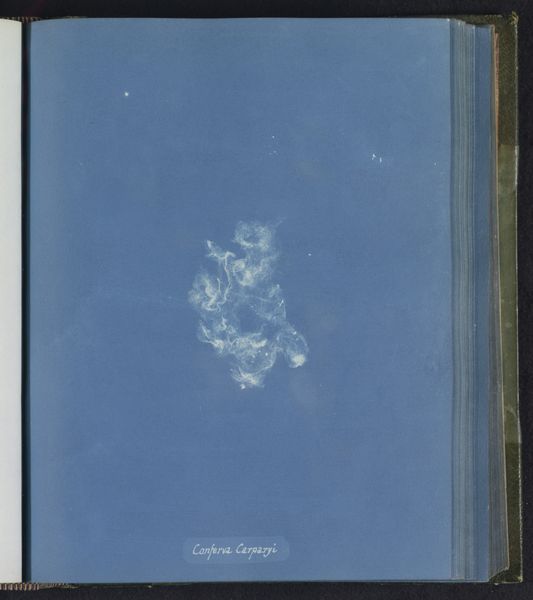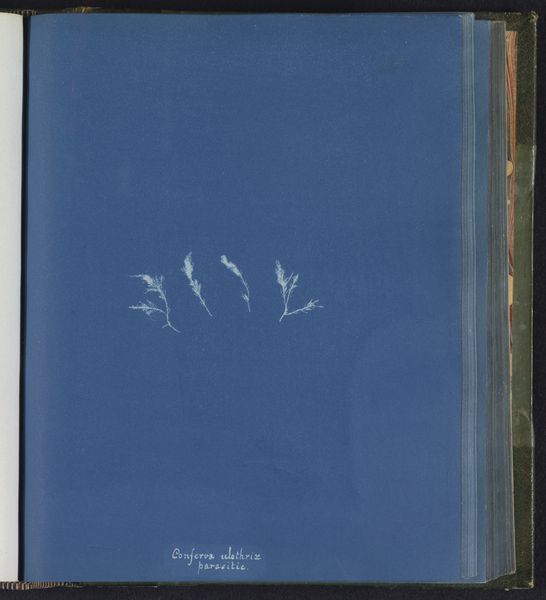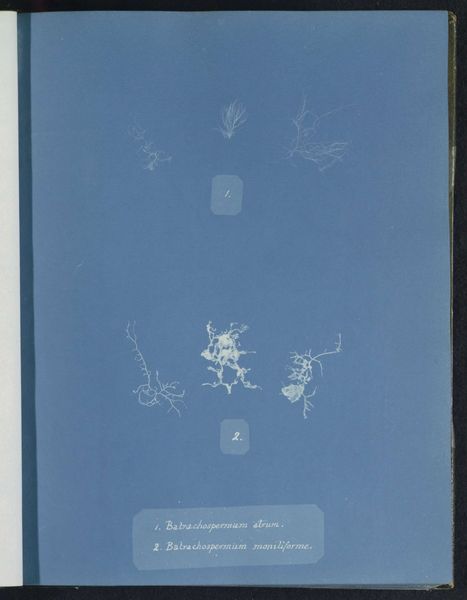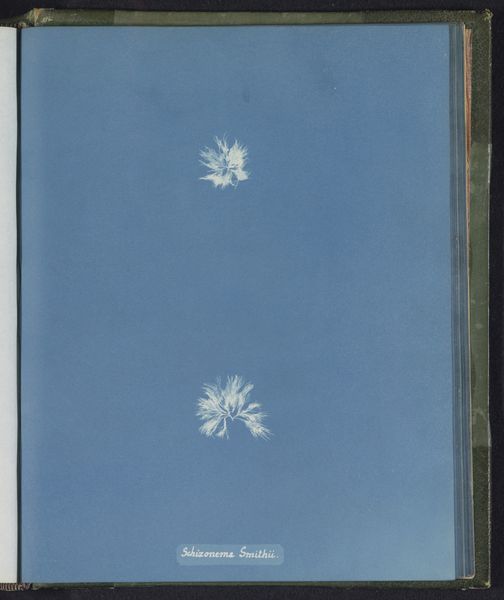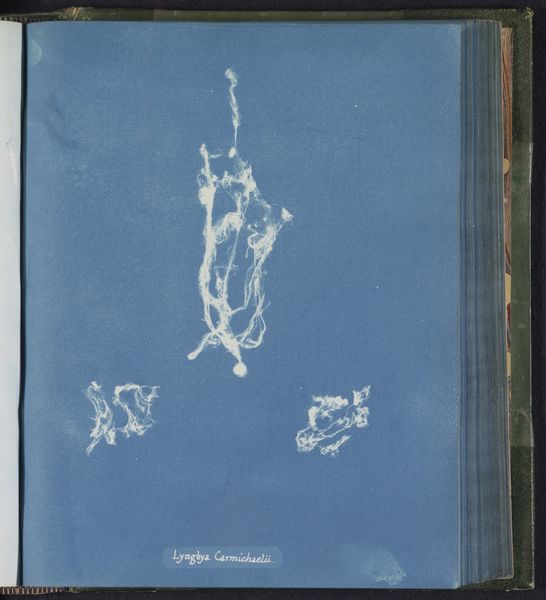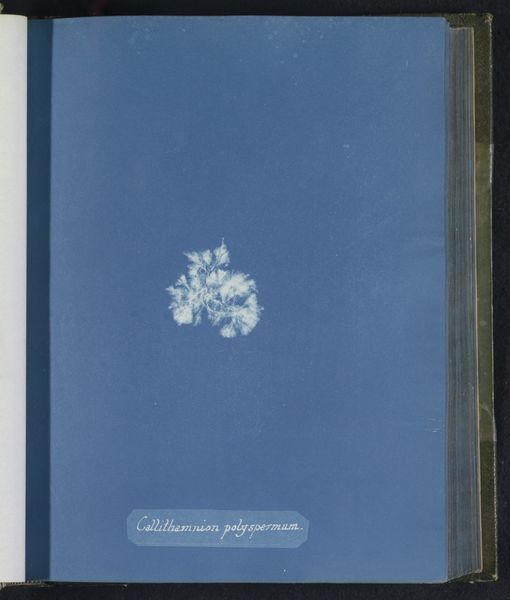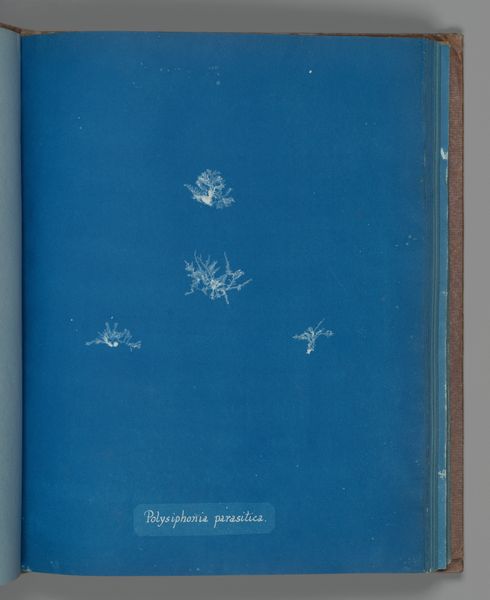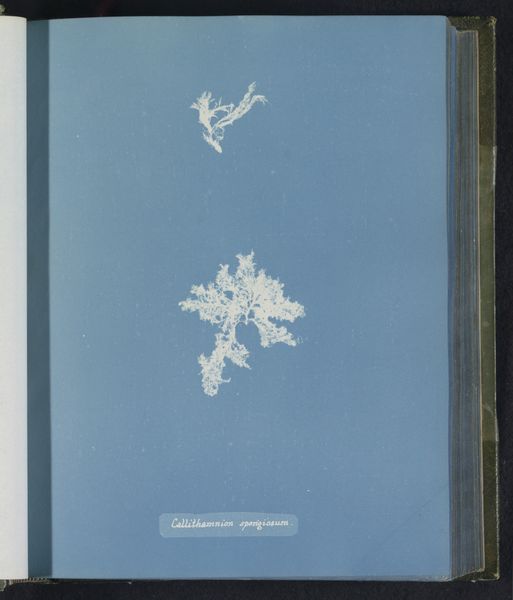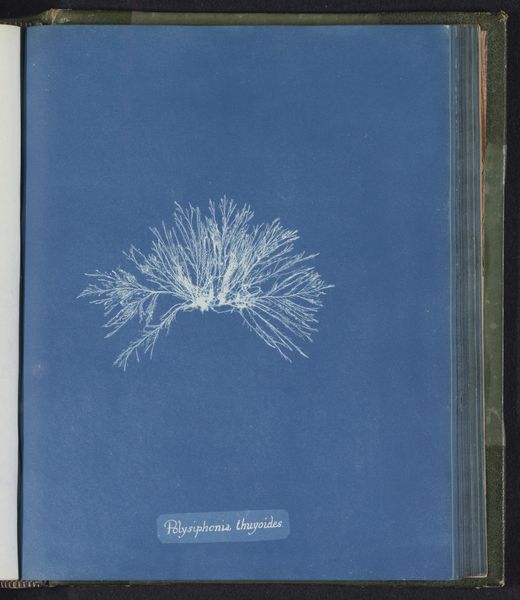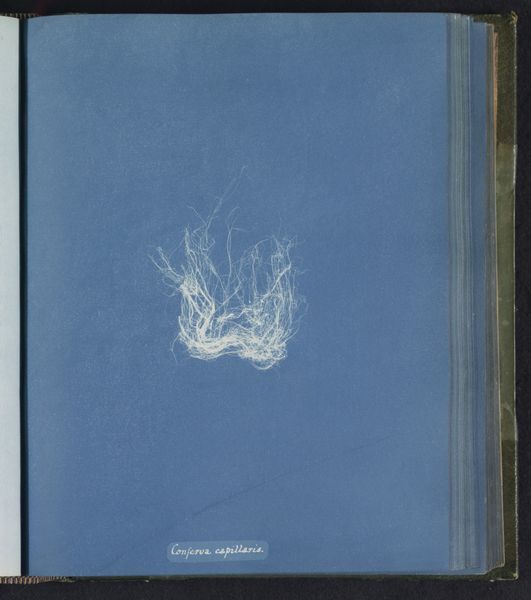
print, cyanotype, photography
# print
#
cyanotype
#
photography
#
realism
Dimensions: height 250 mm, width 200 mm
Copyright: Rijks Museum: Open Domain
Curator: At first glance, this evokes winter. The shapes, floating against the rich blue, like delicate frost. Editor: Yes, it has a wintry elegance, doesn’t it? What we’re looking at is “Polysiphonia Parasitica” by Anna Atkins, one of her cyanotypes, made sometime between 1843 and 1853. Curator: A cyanotype... that explains the mesmerizing Prussian blue. It feels almost alchemical. Was she drawn to that specific hue? Editor: Well, the cyanotype process was relatively new then; Sir John Herschel invented it just a few years earlier. But what’s significant here is that Atkins used this photographic technique to document botanical specimens. Curator: Ah, so it's a blend of art and scientific recording! Almost a dream of rational beauty... I feel the need to label it that way, just as a feeling of course, do not take it too seriously. Editor: Precisely. In fact, Atkins’ book, "Photographs of British Algae: Cyanotype Impressions", is considered the first book illustrated with photographic images. It marked a critical convergence of science, photography, and print culture. It was privately published as an early act of sharing and communication. Curator: Algae. So what looks like ice, is actually marine life... That re-contextualizes everything. They almost seem to be suspended in the deep sea. But that title though— "parasitica"—injects a slight element of unease, don't you think? Like a quiet, creeping threat lurking under the surface. Editor: It certainly does. It's fascinating how she highlights both the beauty and potential peril in the natural world. In this series, we get both the allure and the inherent political realities— where environments compete for space. Curator: That's what good art does—invites us to pause, question, re-see. Atkins clearly achieved that, creating works that transcend simple documentation. She gave each lifeform a very specific beauty of its own. Editor: Absolutely. Looking back, this print reminds me how even early photography served cultural and scientific narratives. Art becomes a tool for observing, understanding, and also framing the world around us.
Comments
No comments
Be the first to comment and join the conversation on the ultimate creative platform.


